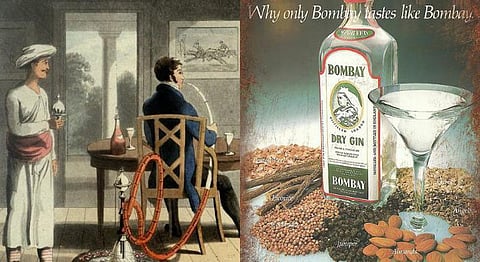
- HOMEGROWN WORLD
- #HGCREATORS
- #HGEXPLORE
- #HGVOICES
- #HGSHOP
- CAREERS
- ABOUT US
- CONTACT US

Homegrown brands in India have done much to revolutionise the popularity and consumption of gin –– a drink that was once losing out to whiskey (and maybe rum) in almost every aspect, is now more widely accepted and enjoyed. There was a time when gin was included on bar menus, and all the drinks did was take up space.
In recent years, Nao Spirits’ Greater Than and Hapusa, Stranger & Sons, GinGin and more will testify that this has been changing. Gin is surely becoming a go-to choice for many across the country –– in fact, they are even moving past the simple Gin & Tonic.
Its refreshing comeback reminds us of the time in Indian history when gin came about –– that, at the least, is a rather interesting story. From how the alcohol made its entry into India, gave birth to the famed Gin & Tonic, to how they were stored, the tale of gin is not one bit morose.
Before the British took control of India, they fought the Thirty Years War on Dutch land. There, the British soldiers came across Genever (Dutch word for Juniper) –– at the time, it was considered a medical aid to circulation. Also called ‘Dutch Courage’, it was believed that Dutch soldiers consumed it before going to each battle. As and when the British soldiers returned home, they brought back the concept of Genever –– soon enough, most of London was consuming this low-cost drink. Later, it became the ‘Gentleman’s Drink’.
When the British made their way to India, they soon realised that the climate and environment were not suited to what they were used to. Targeted by a wave of illnesses, spicy food was the least of their worries –– they became particularly susceptible to malaria. To consume their doses of quinine (alkaloid used to wade off malaria), they added it to carbonated water, which, of course, made it bitter. In search for something to offset this bitterness, the only somewhat fruity and botanical substance that they chose to use was –– you guessed it –– gin.
This was the birth of the immensely popular Gin & Tonic.
Indians took to the drink so well that it became a beat-the-heat summer afternoon drink. In fact, Bombay Sapphire is an ode to the love for gin under the British Raj.
However, before all the fancy glassware and the bottles we see today, gin was stored in rather intricately decorated and painted bottles. What sits on our bars now is far from the humble (yet beautiful) beginnings of gin bottles.
Topophilia India tells us that prior to filling them up and storing them with the beloved gin, these bottles were used to contain aromatic oils and perfumes. It is unclear whether the bottles were made in India or on Dutch land, since that is where they came to the country from –– through the Gujarati coast in Kathiawar. They were, however, painted and gilded in India. Additionally, the boxes that housed these bottles were carved out of rosewood or sandalwood. These bottles, contents included, were used as luxury gifting items to rulers or important personnel.
There we have it –– a rather interesting history to a drink that lost its charm in India for a while, but is now making its rightful comeback. Whether it be a classic G&T or your cocktail of choice, gin’s colorful history allows it to paint its way forward.
If you enjoyed reading this, we suggest you also read:
